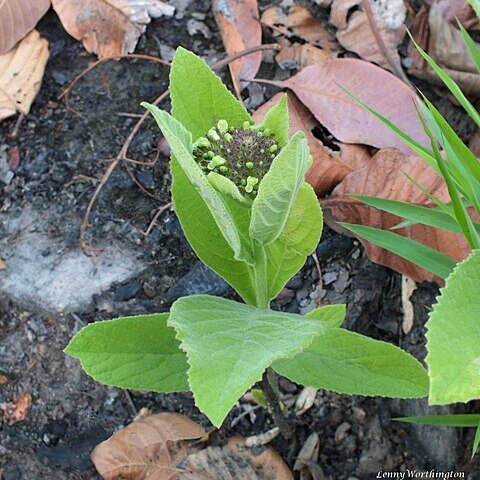A small herb or shrub. It keeps growing from year to year. It has a woody rootstock. It has soft shoots that grow 5-20 cm high. The leaves die back in the winter. The leaves do not have leaf stalks. The leaves are often in rings near the ground. They are broadly oval and have teeth along the edge. The flowers are white and green. They are in groups at the ends of branches. The fruit is round and fleshy. It is small and black and shiny.
Pending.

